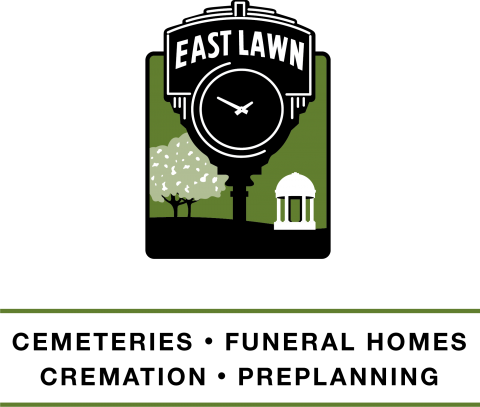Golden Days, Bloody Nights
East Sac is a great place to Trick or Treat. One late September the heat lifted and we began watching the trees. Then the colors began and the leaves floated down and our mother said the golden days were here. It meant one thing to us: Halloween. The fallen leaves were crumpled and papery, good for crunching as we walked to school and talked about what we would wear. I couldn’t decide what to be. Kathleen said she would be a nun, an unfathomable choice in my opinion: why be someone we had to look at five days a week? But she said that as a nun she would get a lot of candy. Moira wanted to be The Lone Ranger. Sheila wanted to be a witch with three black teeth. Our brothers were too little to walk to school with us but we planned their outfits. They would be hobos and I would draw whiskers and beards on them with our mother’s eyebrow pencil.
We had already learned the sociological truth about Trick or Treat. The smaller you were, the greater the treat. As you got older and taller, you had to create more clever costumes. And if you got too old or too tall you risked humiliation. It had happened the year before on 40th between H and J. A gangly boy presented his bag and the man who answered the door shone a flashlight up and down the boy’s frame and said, “You’re a big guy. Why’re you with these little kids, begging for candy?” I watched the boy shuffle off and though I couldn’t see in the dark, I was sure I felt the burning in his face. I knew him, from school. He was in the sixth grade.
I thought this year might be my last. I was 9, a fourth grader now, and aging out of Trick or Treat. So it was essential to be something spectacular and dreadful. At the time I had a Classics Comic book version of A Tale of Two Cities and was struck by Madam De Farge, who was depicted grinning fiendishly while guillotined heads plopped into a basket by her feet. I asked my mother, who had read all the real Dickens books, if she remembered Madame De Farge. “Madame De Farge,” my mother said dramatically. “She sits and knits and calls for blood, and more blood.” The way she put it—“sits and knits and calls for blood”—was darkly thrilling. I would be Madam De Farge.
The peasant dress was easy enough: Kathleen found a worn, brown pinafore and said we could put catsup on it to look like blood. I tried to talk in the style of Charles Dickens. “This shall be my frock,” I said. We got knitting needles and yarn from kindly Mrs. Pearson across the street who assumed I was going to dress as a grandmother. I knew from Catechism that it was a Sin of Omission, equivalent to a lie, to let her think this, but Madam De Farge needed her props. Moira and Sheila brought from their room the wicker basket used as a clothes hamper. Perfect. But now it was the day before Halloween. How was I to come by a batch of decapitated heads? Melons, my father said. We piled into the station wagon and Dad drove to the store while my mother made stew. He bought five honeydew cantaloupes, smooth enough to draw on.
The Halloween vibe always inspired him. On the way back from the store he slowed down by the blood bank, that imposing, round edifice on J Street. It was time we learned the truth, he said. The blood bank was not filled with offices, but was instead an undulating lake of icy, cold blood. On the top floor men in row boats paddled through the blood scooping up samples for medical science. Where did the blood come from? From criminals, he said, and people in insane asylums. Kathleen and I were too old to believe this but were fascinated nonetheless. Sheila asked why there were two rows of windows around the building. They were not really windows, Dad said, but portholes. Every fifth Friday, in the middle of the night, the windows were opened and the blood released in huge gushes. It flooded the streets. You could swim in it. Once two burglars were swept away, engulfed in a gurgling sea of blood. Silent, we peered up at the building.
He slowed down again by East Lawn cemetery. He said it wouldn’t look so peaceful tomorrow night when those bony arms reached up and pushed the graves open and hungry skeletons came clanking down the streets. My little brothers gazed, wide-eyed, and even I, Madam De Farge, felt a chill.
After dinner we sat around the living room drawing faces on the melons. Dad showed us how to make a mouth with a tongue hanging out and Kathleen drew black, bulging cartoon eyes. We agreed that people who had just had their heads cut off would have a startled look.
The next day we were all dressed at five p.m., when it was still light. Mrs. Apperson came over to see our costumes. She gave each of us two rolls of Necco wafers and a Hershey’s chocolate bar. “Good Lord,” she said when she saw the basket of heads.
We set off when it was dark, our father in the lead. On the sidewalks I pulled the basket of heads in our red wagon, but when we got to houses I used Sheila’s jump-rope to drag it up the walkways. Crowded under porch-lights, we put our little hobos up front. Doors opened, people filled our bags. Kathleen was right; everybody liked the nun and asked her name. “Sister Veronica,” Kathleen said demurely and got an extra treat. A lady looked at Moira with her black mask and gun and holster, and said, “Well well, if it isn’t Dale Evans, queen of the cowgirls,” and Moira sighed and looked at her boots. She was the Lone Ranger but too shy to say so. It was Madam De Farge however who caused the most confusion. One man gazed oddly at me and hollered into the house, “Marilyn, come see. There’s a kid here with a basket of heads.” Marilyn came. “What on earth?” she said, and I said that I was Madam De Farge. “You’re a madam?” she said. She and the man went out to talk to my father. We followed and had to stand waiting while my Dad and the couple talked. Then the man ran back into the house and returned with a bowl of Tootsie Rolls, handed one to each of us. My father said that from now on I had to explain that Madam De Farge was from the French Revolution. We headed up D street to the Mc Kinley Park area where the harvest was always bountiful and the people, Dad said, were smarter.
In half an hour our bags were heavy and we started down the other side of D. I was weary of explaining the guillotine to grown-ups who were supposed to already know these things. A group of big boys roamed the streets, making scary noises, laughing loudly. One of them was the big boy who had been shamed last year. Our father said they were just punks, don’t worry. They quieted down when we passed, probably subdued by Dad’s size and menacing squint. I wanted to skip Mrs. Lehman’s house because she only gave raisins and nuts, but we couldn’t because Dad said she sat up late tying orange ribbons on the little black bags. So we had to say thank you and act happy. Finally we hit 42nd street and one last stop: Mrs. Pearson. I didn’t want to go here either because of my Sin of Omission lie about dressing as a grandmother; also, I had lost one of the knitting needles. But Mrs. Pearson appeared to have forgotten everything, even who we were. She kissed my small hobo brothers and squeezed the cheek of Sister Veronica. When she saw the basket of heads she put her hands to her face and said, “Oh no, Madam De Farge.” Then she and my father had a glass of whiskey to ease their fright. What a night. We ran across the street to our house and poured our bags into separate heaps on the table so we could examine and trade candy while our mother watched. In our family the older ones were forbidden to steal or trick the younger ones out of their loot, so there was no use even to try.
I wheeled the wagon into the back yard and lugged the hamper of heads into the kitchen. My mother said she would see if the melons were edible. Most of us made faces and said, ew, we didn’t want to eat used heads, and set up a clamor, but she said we were acting like lunatics because we’d had so much sugar. After that we settled in the living room because Dad was going to tell ghost stories. I turned off the porch light. Outside the street was dark and quiet, no more trick-or-treaters. I saw the big boy, the seventh grader who had gone over to the punks, walking alone. Why couldn’t he have candy and stories? It’s what everybody needs.
Pat Lynch
















 Subscribe In A Reader.
Subscribe In A Reader. Check Us Out On Facebook!
Check Us Out On Facebook! Check Us Out On Twitter!
Check Us Out On Twitter! Visit Nextdoor!
Visit Nextdoor!









One Response to Golden Days, Bloody Nights—East Sacramento Halloween Memories